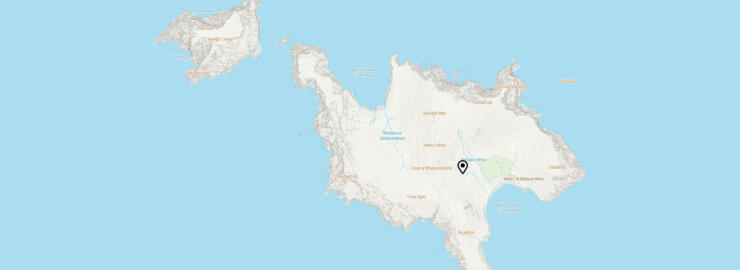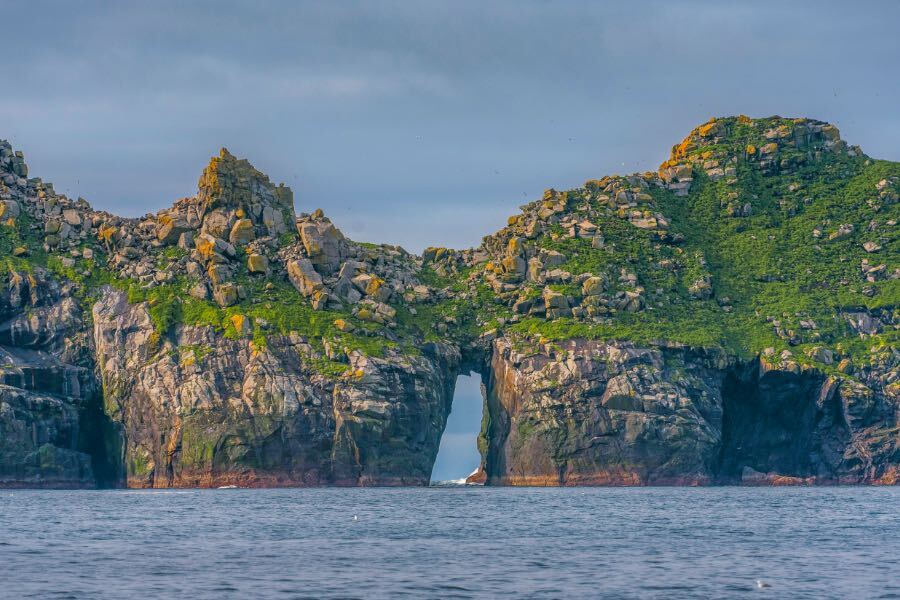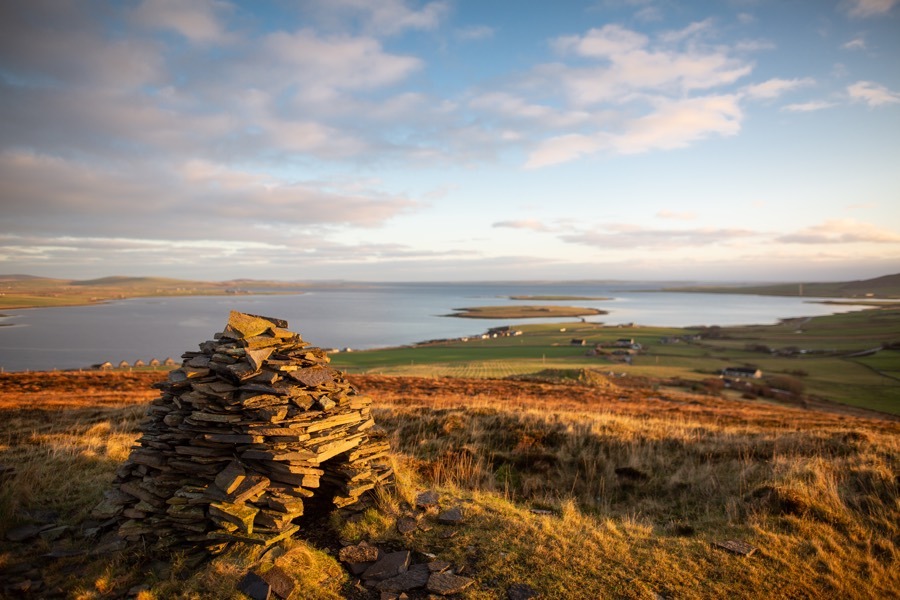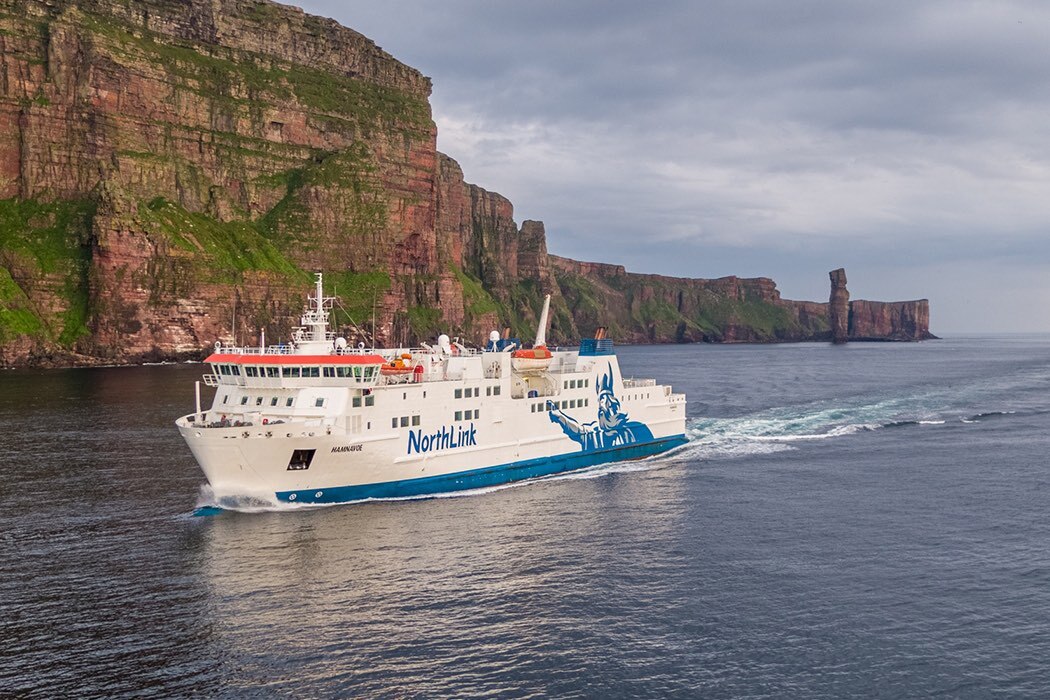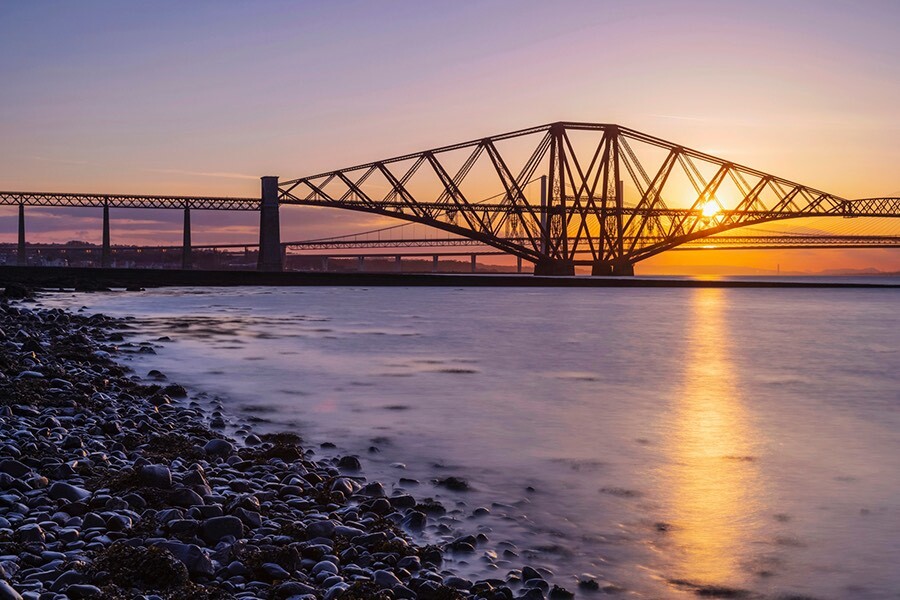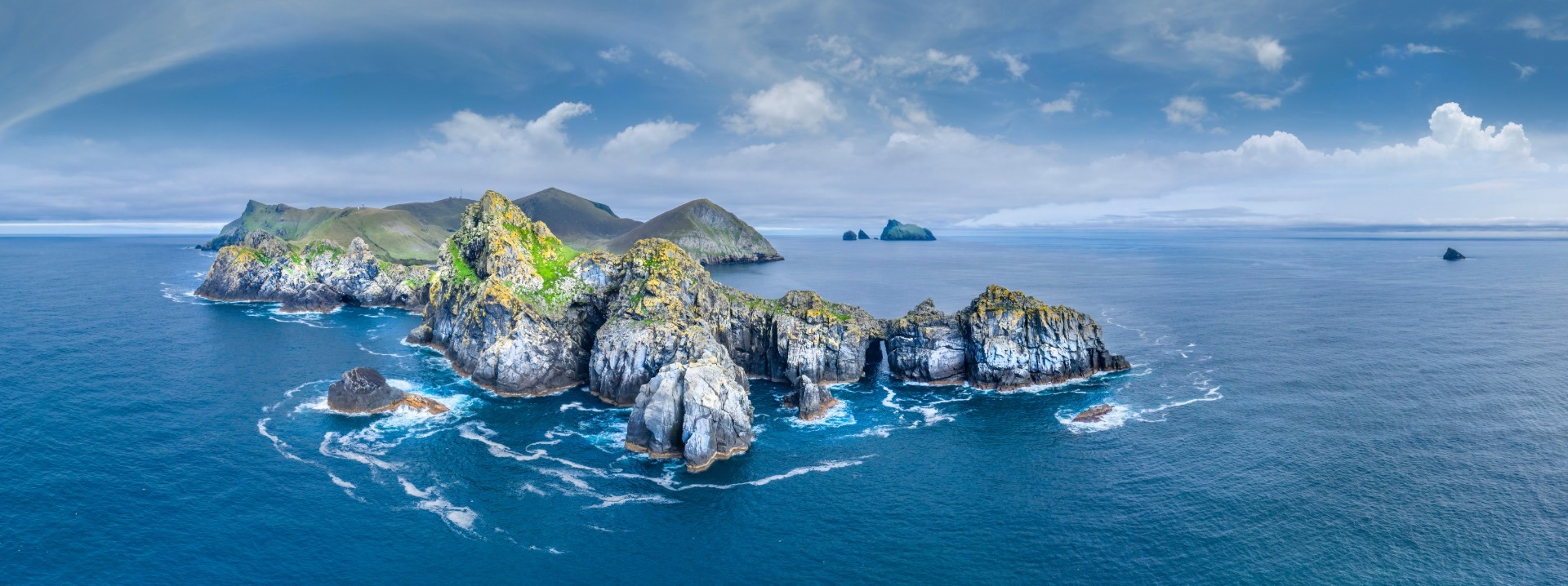
Experience Explore the UNESCO Site in the Outer Hebrides
Designations on this journey
How to get to the north west islands of Scotland
You can take a Calmac ferry over to the Outer Hebrides from Oban, Mallaig or Uig, but why not travel over from Ullapool after exploring the Wester Ross and North West Highlands UNESCO designations in the north of Scotland?
There are also flights to Stornoway or Benbecula with Loganair, or you can land on the world’s only beach airport on the Isle of Barra.
Once you arrive, local bus services connect major villages, and there are plenty of great organised tours and taxi services that you can take advantage of. Make saving on ferry journeys between islands and take advantage of HopScotch tickets issued by CalMac.
Driving is the most popular way for people to explore the Outer Hebrides, but you can also explore the islands on a cycling holiday.
Find more information on getting to the Outer Hebrides and getting around the islands.

St Kilda World Heritage Site
Where to start
Off the west coast of Scotland, the Isle of Lewis and Isle of Harris form the main island in the Outer Hebrides. They may sound like two separate islands, but Lewis and Harris are actually two parts of the one island, with the largest town Stornoway on the east coast.
You can learn a lot about the islands of St Kilda from the larger islands of the Outer Hebrides. With dramatic landscapes, a unique Gaelic culture and fascinating history, this is a great place to start your Hebridean adventure. You will be blown away by wild mountains, immense white beaches, rugged coastlines and lunar landscapes.
If you’ve come from the UNESCO designations in the north of Scotland, you’ll arrive into Stornoway from Ullapool on the Calmac ferry.
Islands to base yourself:
Why it’s special
St Kilda is the UK’s only dual UNESCO World Heritage Site, and one of only 39 in the world.
It was made a World Heritage Site in 1986 for its natural heritage, but this was extended in 2004/5 to include the surrounding marine environment and its importance as a cultural landscape.
St Kilda is remarkable not just for its striking landscape and fascinating human story. Its unique geographical position and oceanic climate allow it to support a dazzling array of inter-dependent ecosystems. An extraordinary biodiversity can be observed, both on its windswept lands and beneath the sparkling surface of its coastal waters.
It’s special for how the landscape influenced but didn’t stop the progress of life and culture for the islanders and the wider community of the Outer Hebrides.
Type of designation:
World Heritage Site
How long to stay:
At least 3-4 days

What to do during your time
Be aware that this heritage site is a protected environment, so it can’t accommodate a large number of visitors. Tours by boat are available but space is strictly controlled.
If you are one the lucky few to visit St Kilda, even if it means just observing it from the deck of a boat, you experience will be all more richer if you take the time to learn all you can about St Kilda.
Fortunately, there is a wealth of online resources and literature for you to delve into. Start with this succinct but fascinating article compiled using original photographs and contemporary accounts collected by National Trust for Scotland’s St Kilda archives. It offers a compelling introduction to the nature and history of this fascinating archipelago. There is also an important collection of photographs belonging to the University of Edinburgh.
For a more in-depth picture, get your hands on a copy of St Kilda: The Last and Outmost Isle by Angela Gannon and George Geddes. This book which offers a vivid introduction to the history of the archipelago. Painstakingly researched, it explores the importance of St Kilda to the development of Western Isles and Outer Hebrides.
It’s hoped in the future that a visitor centre will be developed on the main islands, but more information is not yet available.
Places to learn more about St Kilda
Things to do
Seallam Visitor Centre
Learn about the social and natural history of the Hebrides and their communities, including St Kilda, at the Seallam! Visitor Centre in Northton on Harris, which is home to extensive archives.
Are you related to a St Kildan? The centre is also home to Co Leis Thu?, a genealogy research centre run by Bill Lawson, who has specialised in family history for the past 40 years. He’s created over 25,000 family charts, looking at the family tree of those who lived on the islands over at least the last 200 years. You can explore census returns, birth, marriage and death certificates plus much more.
Explore Seallam! Visitor Centre.
Taigh Chearsabhagh Museum and Arts Centre
If you’ve wondered what community life was like on secluded islands on St Kilda, the brilliant Taigh Chearsabhagh Museum and Arts Centre on the neighbouring Isle of North Uist offers some idea. Get to know this local community and culture at this hub where people can meet, share ideas, learn new skills and experience exhibitions, live music, creative workshops and community outreach events. A café, shop and outdoor sculpture trail feature alongside its fascinating museum and arts centre.
Check out the events programme, and explore the Taigh Chearsabhagh Museum and Arts Centre.
Museum nan Eilean
Uncover the history of these islands and find out how it has shaped the way of life today at the Museum nan Eilean in Lews Castle. Learn about the distinctiveness of the Outer Hebrides, which has been shaped by the unique combination of land, sea and people, and discover what island life is actually like. See how people have lived and worked from the earliest times to the present day, and how that culture is expressed through the Gaelic language, religion and community life. Six of the iconic Lewis Chessmen are on permanent display here too, after they were uncovered in Uig on the west coast of Lewis in the 19th century.
Visit Museum nan Eilean.
Kelvingrove Museum and Art Gallery
Among the 8,000 exhibits which make up the eclectic collections of this vast museum and art gallery in Glasgow, there is a permanent St Kilda exhibition. In addition to life on St Kilda, the museum also boasts a wealth of material to relating to early settlements across the islands and Scotland as a whole.
Explore Kelvingrove Museum & Art Gallery.
St Kilda boat tours
Many of the boat operators from Harris and Uist know the area intimately and have strong links with the island, whether through the fishing industry, local stories, or family connections. By meeting locals, you can learn why St Kilda occupied a place of special importance in the history of the Outer Hebrides, both as a rich fishing ground and source of employment, as well as a site of great cultural and historic value.
If you do go onto the island, the advice is to follow the network of trails please follow the advice of the Rangers for the best chance to responsibly experience the landscape and wildlife.
Keen scuba divers can explore what is regarded as one of Europe’s premier diving sites. Delve below the crystal-clear waters of the shoreline for the chance see an array of ocean flora and fauna, including whales and even basking sharks.
Hebridean Adventures
Make the most of this unique part of the world and book a 5 or 6 night cruise to St Kilda with Hebridean Adventures. These trips run from Stornoway and include a full day ashore on Hirta, as well as the Shiant Isles in the Minch.
Go ashore with Hebridean Adventures.
Sea Harris
Head over to St Kilda with Sea Harris from Leverburgh harbour on Harris. The journey takes 2.5 hours each way, giving you up to 5 hours ashore on the island with a friendly, local crew with in-depth knowledge of the seas and the island’s history.
Travel with Sea Harris.
Kilda Cruises
Leave from Leverburgh harbour on Harris at 8am for a fast and comfortable day trip with Kilda Cruises. You’ll head over to Hirta where you’ll be greeted by a National Trust for Scotland warden before exploring the island at your leisure.
Book a trip with Kilda Cruises.
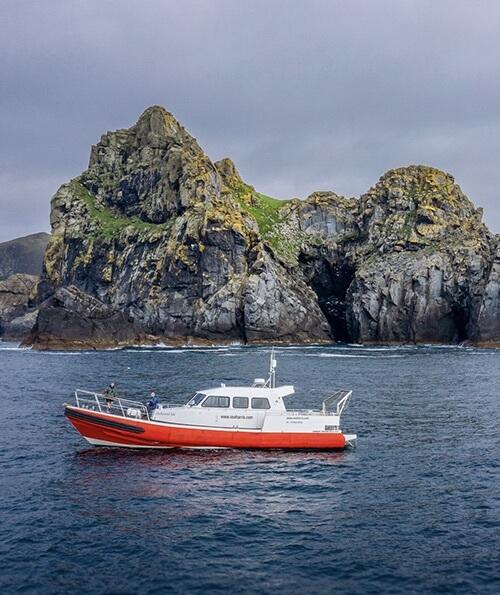
Life on St Kilda
St Kilda has the largest and most diverse seabird colony in the North Atlantic. During the breeding season thousands of gannets, puffins, fulmars, and other species descend upon cliffs.
There’s also plenty happening below the waves. Thanks to an extraordinarily rich marine environment created by an unusual confluence of oceanic forces and geology, both northern and southern underwater species are able to thrive.
Back on dry lands, the topography of St Kilda meant a hardy and self-reliant existence for the islanders which saw the development of a unique form of subsistence farming and hunting seabirds, which endured for thousands of years until the community left in 1930. This human story is documented in a museum housed inside a 19th century house of the Isle of Hirta. Here, artefacts relating to St Kilda’s natural and anthropological history are stored
The church and schoolroom has also been restored based on archival photographs and original plans to show how they might have looked in the early 20th century.
There are also hundreds of cleits scattered around the village area. These are drystone storage structures unique to St Kilda and found across all the islands and stacks in the archipelago. They were used to store and dry birds, eggs and feathers, harvested crops, and peat and turf used for fuel.
Top tip:
For those that do visit St Kilda, it is of vital importance that visitors leave absolutely no trace. This includes bringing your own supply of drinking water and using toilet facilities aboard the vessel, where possible.
Other things to do in the Outer Hebrides
Calanais Standing Stones
Forming one of the most complete stone circles in Britain, the Calanais Standing Stones sit on the west coast of the Isle of Lewis. They are an ageless mystery and their impressive scale and undeniable beauty leave a lasting impression.
This mysterious circle of 13 stones has a monolith in the centre. It is believed that the majestic stones date back to around 2,900 BC, making them older than the Pyramids of Giza.
No one really knows why the standing stones exist. One guess is that they formed some kind of astronomical observatory.
Visit the Calanais Standing Stones.
The Butt of Lewis
Get a different view of the UNESCO designations you visited in the north of Scotland. Visit the northernmost point on these islands, the Butt of Lewis, and you’ll see the tall lighthouse and sweeping views out across the North Atlantic. Take a stroll along the coastal path and feel the raw power of the seas below as you admire the view back to the mainland.
Sunrises and sunsets are spectacular here and you might even be lucky enough to see the colourful Northern Lights in the autumn and winter months.
Visit the Butt of Lewis.
North Harris Eagle Observatory
These islands are a safe haven for many birds of prey species. Visit the North Harris Eagle Observatory (part of the Outer Hebrides Bird of Prey Trail) and wait quietly as you scan the skies for an impressive golden eagle. If you’re really lucky, rare sea eagles can sometimes be spotted too!
Find more on the North Harris Eagle Observatory.
Watersports
The crystal-clear Atlantic waters of the Outer Hebrides offer endless sea adventures to connect to nature.
Rejuvenate your mind and body with a wild open-water swim off the sandy beaches of Hushinish. Chase the waves surfing on Cliff Beach on Lewis, or try sea kayaking on the turquoise waters around medieval Kisimul Castle on Barra. You can also experience the wonders beneath the waves along the North Harris Snorkel Trail.
Try some watersports.
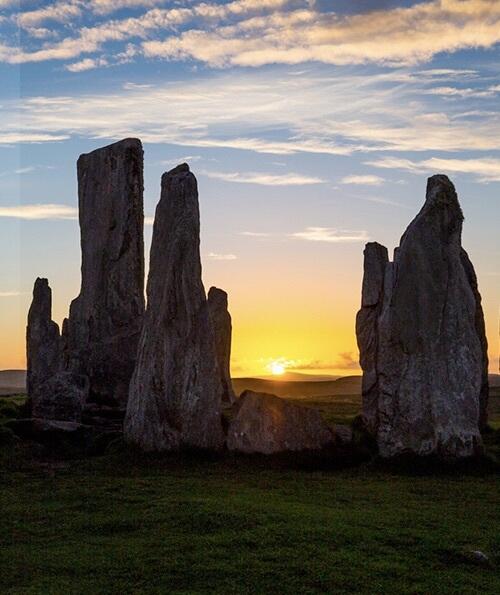
Accommodation
Blue Reef Cottages
Set in the beautiful remote village of Scarista, book one of these two sustainable turf-roofed luxury self-catering cottages for your Hebridean break. There’s a sauna or jacuzzi bath to enjoy with the panoramic views of local beaches, and the stars at night.
Book Blue Reef Cottages.
Galson Farm Guesthouse
Enjoy a stay at this unique traditional Hebridean farmhouse full of character and charm, which is part of a small working croft on the west coast of Lewis. Take a short walk to see the Butt of Lewis Lighthouse, and then sit down to a home-cooked farmhouse evening meal.
Stay at Galson Farm Guesthouse.
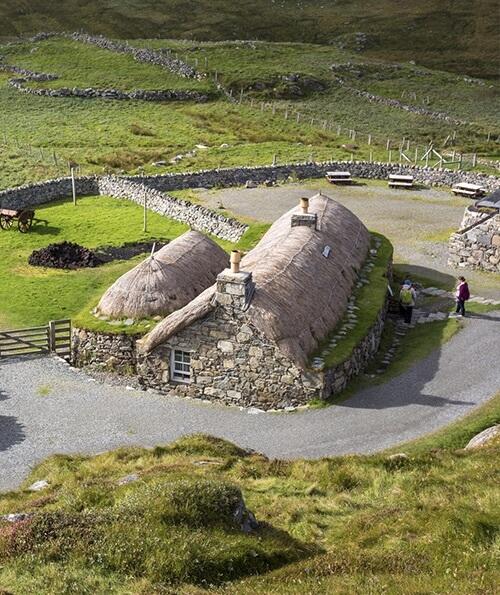
Food & Drink
Follow the Eat Drink Hebrides Trail the length and breadth of the archipelago to discover the islands’ outstanding local producers for yourself. Much of the produce on the island is unique to the Outer Hebrides, and almost entirely made or prepared by hand by the islanders themselves.
The quality of the seafood reared or caught in the waters off the islands is world-renowned, with salmon, scallops and lobsters among the typical island fare.
Aside from fish, the Outer Hebrides’ landscapes ensure that livestock have plenty to feed on. Hebridean mutton boasts a distinct, delicate flavour due to the heather the hill sheep graze on.
Follow the Eat Drink Hebrides Trail.
Settle in next to a roaring peat-burning fire (with its own unique smell) and sip on one of the many local drinks, from the Crofter IPA ale of the Loomshed Hebrides Brewery to Isle of Harris Gin of the Harris Distillery or the Barra Atlantic Gin of the Isle of Barra Distillery.
Local tips
Communities in Lewis and Harris follow a strong religious observance on Sundays, meaning that most shops and businesses are closed on that day.
You can read about the story of St Kilda before you visit. St Kilda: The Last and Outmost Isle by Angela Gannon and George Geddes offers a fantastic introduction to the history of the archipelago. Painstakingly researched, it paints a vivid and comprehensive picture of St Kilda and its significance to the Outer Hebrides.
Visitors can also look forward to Slighe Hiort, a project which aims to develop an Outer Hebrides St Kilda Way which will create a waymarked route connecting three future St Kilda interpretation centres. It is hoped this will help place St Kilda within a broader historical context, showing the extent it influenced the culture and development of the islands as a whole.
Walks and ways to travel around
Follow the 185-mile Hebridean Way Cycling Route and pedal over 10 islands in the archipelago, passing some incredible attractions and scenery along the way.
You can also choose to walk sections of the route, and enjoy Pit Stops along the way with places to stay, eat and shop.
More information
UNESCO designation
Historic Environment Scotland National Trust for Scotland World Heritage ConventionVisiting the area
Outer Hebrides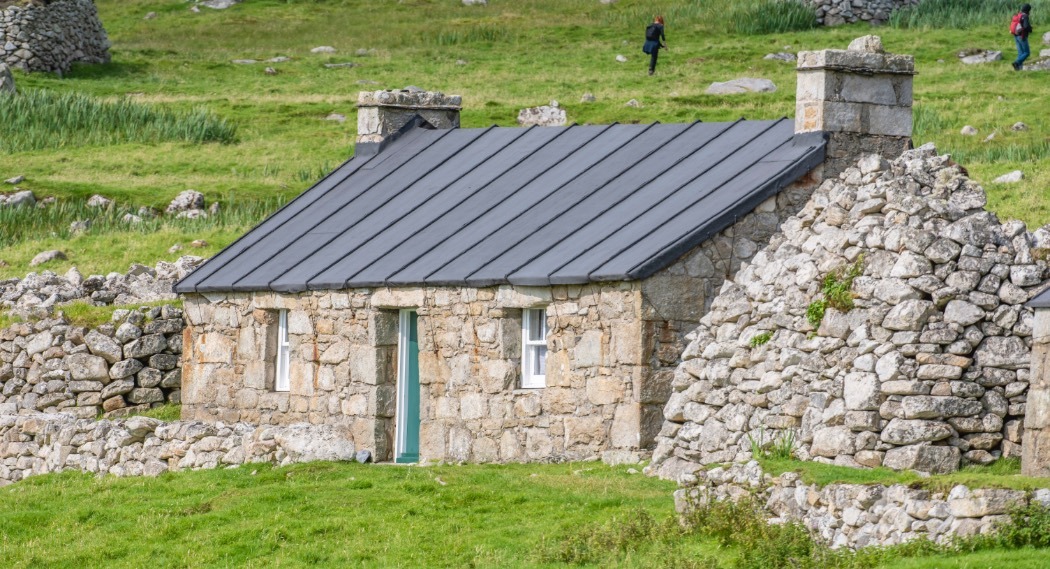
Where next on the UNESCO Trail?
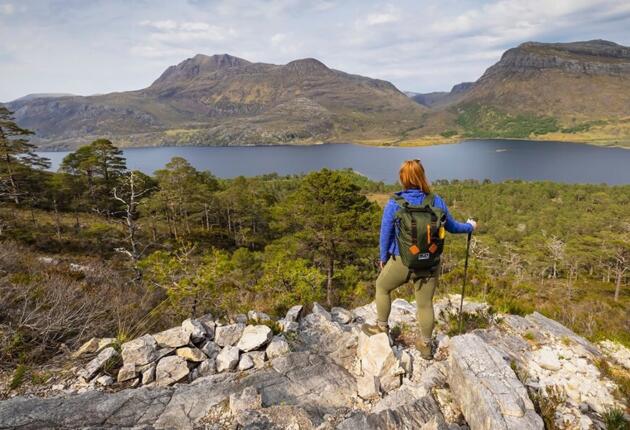
UNESCO Sites to Explore in North Scotland
Check out the beautiful UNESCO sites of North Scotland - the Wester Ross Biosphere and the North West Highlands Geopark.
View Journey
UNESCO Sites to Explore in Central West Scotland
In central west Scotland you have three UNESCO sites to discover - the Antonine Wall, New Lanark and Glasgow, City of Music.
View Journey
